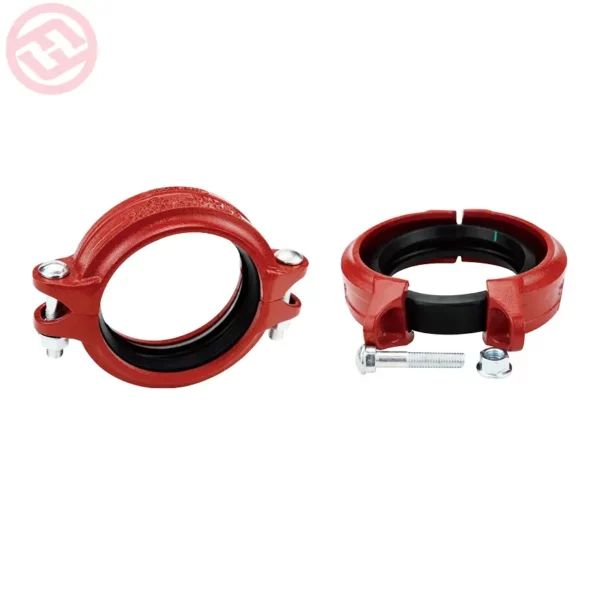Preventing leaks in flexible coupling connections is essential to maintain the integrity and functionality of the piping system.
Here are some key steps to prevent leaks in flexible coupling connections:
- Proper Installation: Ensure that the flexible coupling is installed correctly according to the manufacturer’s instructions and guidelines. Follow the recommended procedures for aligning the pipes, inserting the gaskets or sealing elements, and tightening the clamps or fasteners to the specified torque.
- Inspect Components: Before installation, inspect the flexible coupling, gaskets, and sealing elements for any defects, damage, or signs of wear. Replace any damaged or worn components to ensure a proper seal.
- Surface Preparation: Clean and prepare the surfaces of the pipes that will be connected by the flexible coupling. Remove any debris, rust, or contaminants that could interfere with the sealing surfaces or compromise the connection.
- Apply Lubrication: Apply a suitable lubricant to the gaskets or sealing elements before installation. Lubrication helps ensure proper seating and compression of the gaskets, reducing the risk of leaks.
- Ensure Proper Alignment: Align the pipes properly before tightening the flexible coupling. Misalignment can lead to stress on the coupling and gaskets, potentially causing leaks over time. Use alignment tools or shims if necessary to achieve proper alignment.
- Tighten Fasteners: Gradually tighten the clamps or fasteners on the flexible coupling in a uniform and sequential manner. Follow the manufacturer’s recommendations for the recommended torque values to prevent over-tightening or under-tightening, which can lead to leaks.
- Check for Leaks: After installation, visually inspect the flexible coupling connections for any signs of leaks. Perform a pressure test, if applicable, to verify the integrity of the connections under operating conditions.
- Monitor for Movement: Periodically inspect the flexible coupling connections for any signs of movement, shifting, or vibration. Movement can cause stress on the coupling and gaskets, potentially leading to leaks over time. Secure the pipes and coupling if necessary to prevent movement.
- Perform Regular Maintenance: Implement a maintenance schedule to inspect flexible coupling connections regularly for signs of wear, corrosion, or deterioration. Replace worn or damaged components as needed to maintain the integrity of the connections.
- Follow Manufacturer Recommendations: Adhere to the manufacturer’s recommendations and guidelines for the installation, operation, and maintenance of flexible couplings. Manufacturers often provide specific instructions and best practices to ensure the proper performance of their products.
By following these steps and practices, you can help prevent leaks in flexible coupling connections and ensure the reliable and long-term performance of your piping system.
